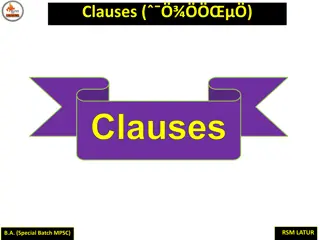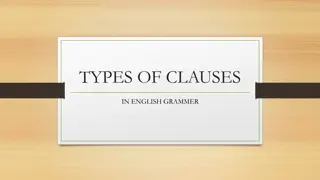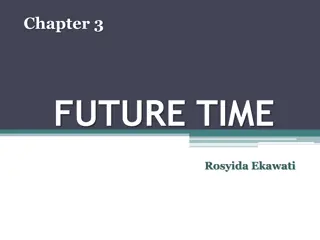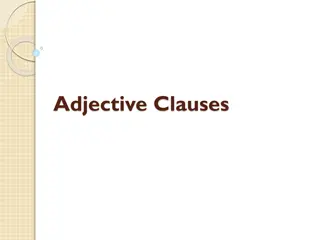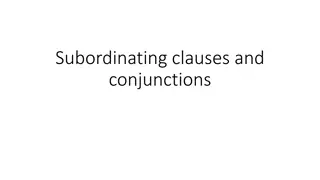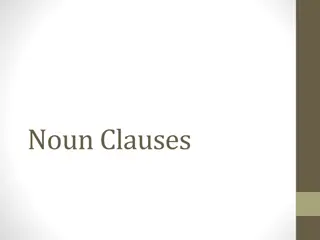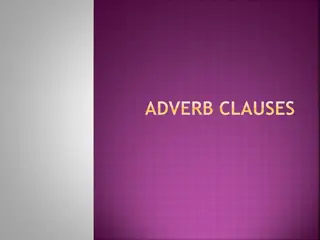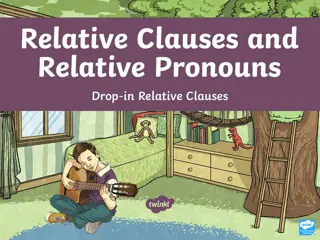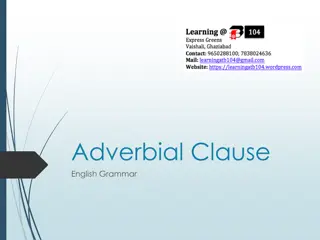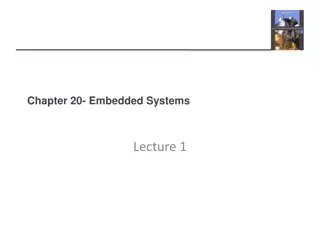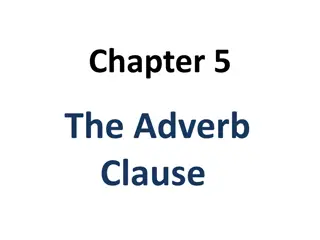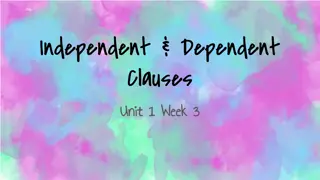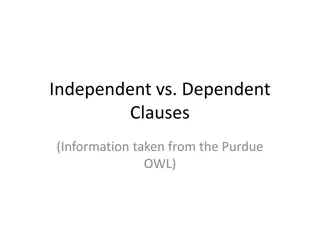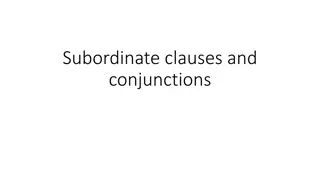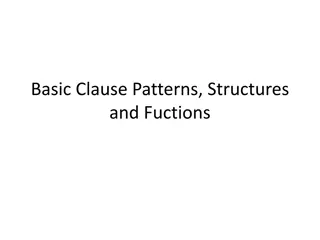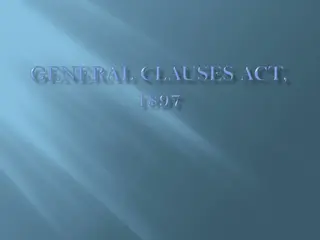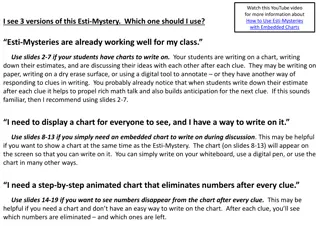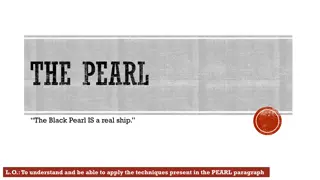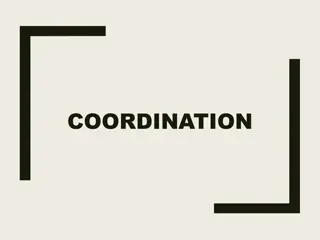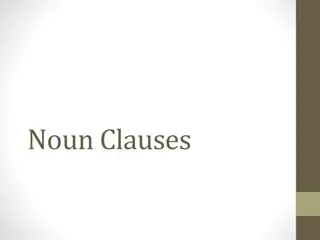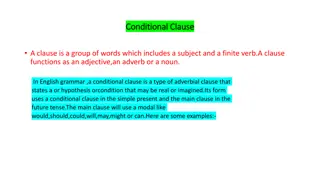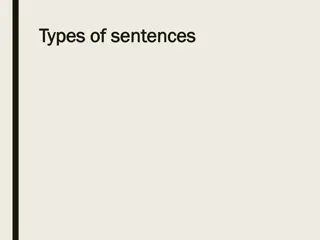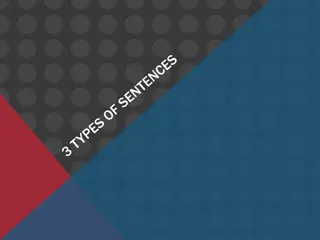Understanding Embedded Clauses in Writing
Explore the use of embedded clauses in writing through examples and practice exercises. Learn to identify main and subordinate clauses, conjunctions, and create sentences with fronted adverbials. Enhance your writing skills by understanding the structure and function of embedded clauses.
Download Presentation

Please find below an Image/Link to download the presentation.
The content on the website is provided AS IS for your information and personal use only. It may not be sold, licensed, or shared on other websites without obtaining consent from the author. Download presentation by click this link. If you encounter any issues during the download, it is possible that the publisher has removed the file from their server.
E N D
Presentation Transcript
Varjak Paw Chapter 13
Make sure you have read chapter 9 or watched the video before you start this lesson.
5 minute starter task Read through the 2 pages of Chapter 13 on the next slide. Can you find examples for all of the following within 5 minutes? 3 pronouns 3 powerful adverbs 3 conjunctions 3 prepositions Good luck!
WALT use embedded clauses in our writing.
Written below is a complex sentence. Varjak stood in front of the cars despite being very scared. We know it is a complex sentence because it is made up of a main clause and a subordinate clause. It also has a conjunction. Can you identify the main clause? The subordinate clause? The conjunction?
Conjunction Varjak stood in front of the cars despite being very scared. Main clause (makes sense on its own) Subordinate clause (needs the main clause in order to make sense) Could you rearrange these clauses to create a sentence with a fronted adverbial? Do not replace or add any words. What do you need to change?
Subordinate clause (fronted adverbial) Main clause Despite being very scared, Varjak stood in front of the cars. Simply by moving the subordinate clause from the back to the front of our sentence, we have turned it into a fronted adverbial. Could we our subordinate clause to another part of our sentence?
Main clause Subordinate clause Varjak, stood in front of the cars. who was very scared, We can insert our subordinate clause into the middle of our main clause to create an embedded clause. Did you notice which words we needed to change? Embedded clauses add extra information about the subject (in this case Varjak) into our sentence.
Main clause Subordinate clause Varjak, stood in front of the cars. who was very scared, Notice how the embedded clause always has a comma before it and another at the end. Also notice how embedded clauses usually start with who or which because they are talking about the subject or noun. Look back over the 2 pages of Chapter 13 on slide 4. Can you find any examples of embedded clauses?
WALT use embedded clauses in our writing. Varjak couldn t speak. Varjak was ready to fight! Holly shook her head. Tam hurried after her. Tam licked her chops. The city was huge. Elder Paw looked around. Varjak scratched an itch. Varjak staggered towards the tree. The Elder Paw ran at them. Rewrite the sentences below using embedded clauses to add information about the subject in each one. The first example has been completed for you: Varjak, who was a Mesopotamian Blue, couldn t speak. The Contessa s house was big. Jalal struck him.
WALT use embedded clauses in our writing. Going deeper Let s challenge ourselves further by writing a short summary of what has happened in this chapter. Can you include at least 2 embedded clauses and 2 fronted adverbials in your piece?


